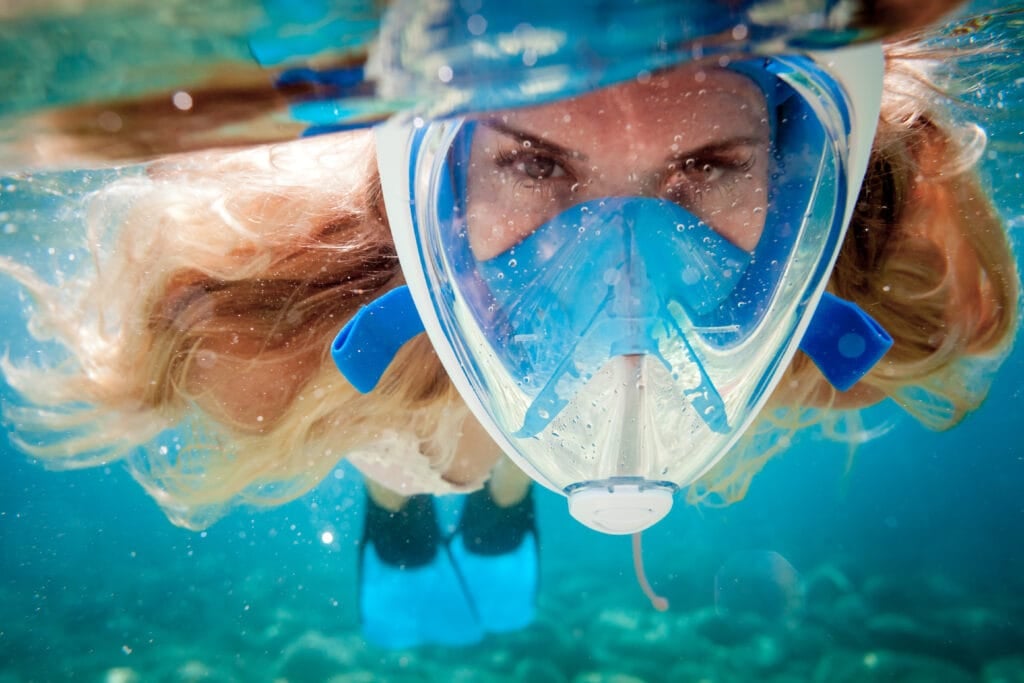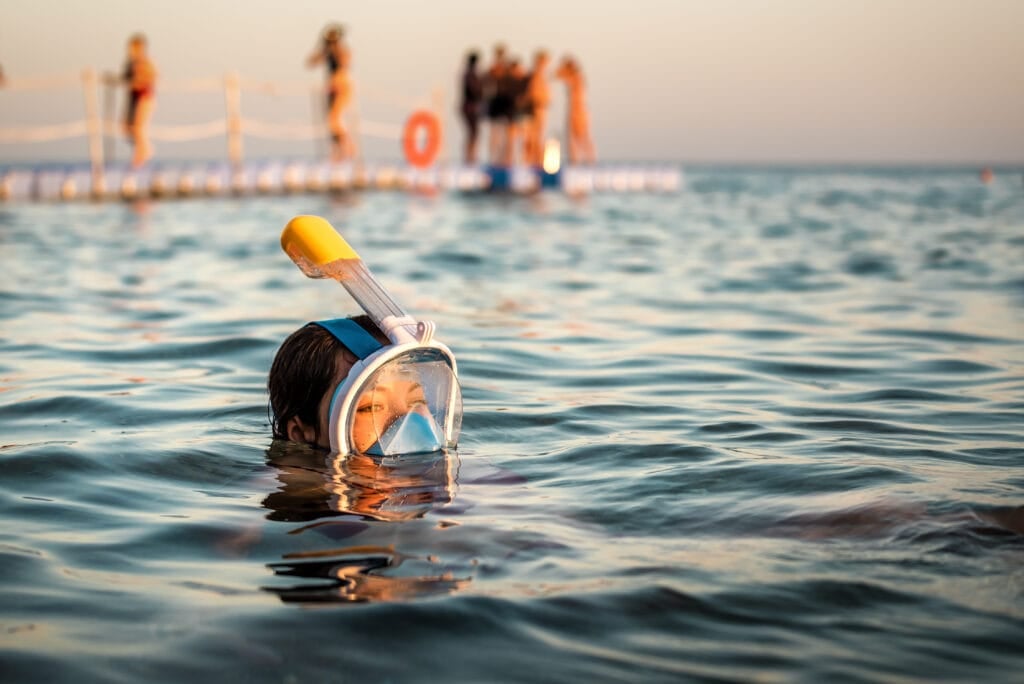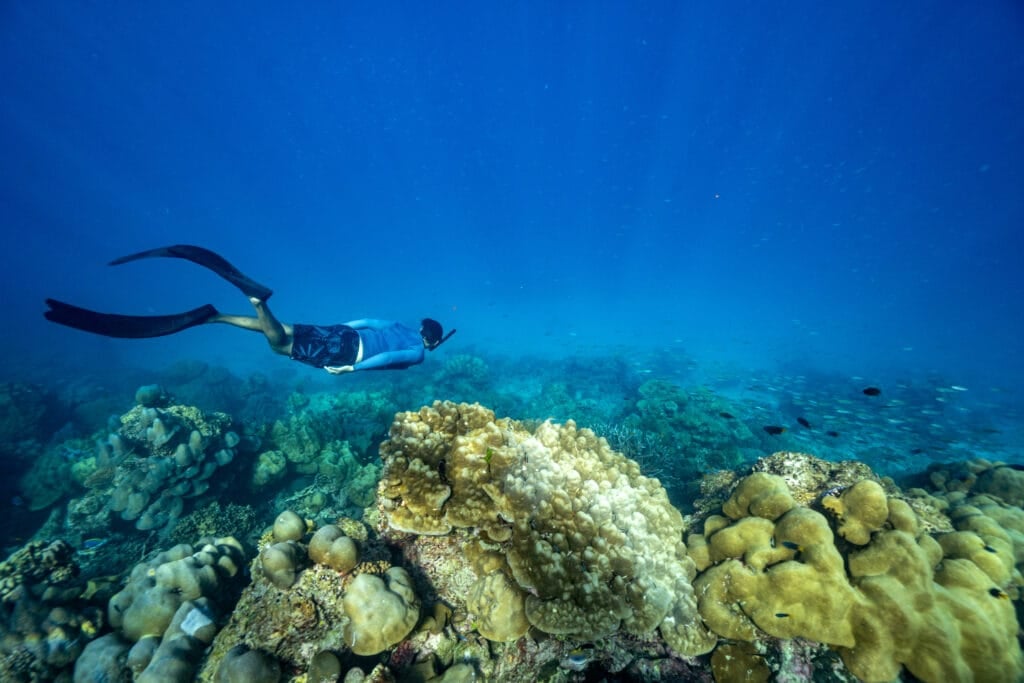Can We Use a Full-Face Snorkeling Mask?
Can we use a full-face snorkeling mask? The answer is no, and this is why.
Full-face snorkeling masks have gained popularity in recent years due to their promise of enhanced comfort and ease of use. While some snorkelers may find full-face snorkeling masks convenient, they pose four significant risks. The first risk is full-face snorkeling masks can pose a high chance of carbon dioxide build-up within the mask due to the limited ventilation system. This can result in symptoms like dizziness, nausea, and in extreme cases, unconsciousness.
Another risk is the utilization of full-face snorkeling masks has been linked to an increased likelihood of engaging in shallow breathing patterns. The third risk is the design of these masks can make it difficult for users to clear water from the mask, leading to restricted visibility and potential panic underwater. Finally, if water seeps into a full-face snorkeling mask, the task of clearing it becomes more intricate compared to conventional masks.
In this blog, we will go into further detail discussing the four risks and shed light on why these masks are not suitable for snorkeling. To make the most of your snorkeling experience, the Maui Snorkeling morning and afternoon tours provide reliable traditional snorkeling masks suitable for individuals of all ages, eliminating the need to bring your own!
The Issue with Recycled Air:
Full-face snorkeling masks cover the entire face, providing a built-in breathing tube that allows the snorkeler to breathe through their nose or mouth. While this may seem convenient, it poses a critical problem: the large volume of recycled air within the mask. Unlike traditional snorkel masks, full-face masks do not allow for the direct exchange of fresh air with the surrounding environment.
The accumulation of carbon dioxide (CO2) within the mask can lead to an increased concentration of this gas with every breath. Breathing in air with elevated CO2 levels can cause shallow breathing, which, in turn, can result in hypercapnia, a condition characterized by an excess of carbon dioxide in the bloodstream. If not addressed promptly, this can lead to symptoms such as dizziness, shortness of breath, loss of consciousness, and, in extreme cases, death.

Shallow Breathing and Risks:
Full-face snorkeling masks have been associated with a higher risk of shallow breathing due to the breathing mechanism they employ. Snorkelers using these masks may unknowingly restrict their breaths to small, shallow inhalations and exhalations. Shallow breathing can result from the perceived resistance to airflow within the mask, leading to a reduced oxygen supply to the body.
This shallow breathing pattern can have severe consequences, particularly when combined with physical exertion or prolonged snorkeling sessions. Insufficient oxygen intake can lead to hypoxia, a condition characterized by oxygen deprivation, which can result in dizziness, confusion, and, in severe cases, loss of consciousness. Such situations can be life-threatening, especially when snorkelers are unable to recognize the early signs and take appropriate action.
Reduced Peripheral Vision:
Another concern with full-face snorkeling masks is the limited peripheral vision they offer. Unlike traditional snorkel masks that cover only the eyes and nose, full-face masks cover the entire face, including the side of the eyes. Peripheral vision plays a crucial role in maintaining situational awareness while snorkeling. It allows snorkelers to detect potential hazards, such as rocks, coral formations, or other marine life, in their surroundings.
It also helps to be aware of the presence and movements of other snorkelers or boats in the area. With reduced peripheral vision, snorkelers may struggle to spot these elements, increasing the risk of accidental collisions or other avoidable accidents. With traditional snorkel masks, peripheral vision helps them gauge their position in relation to the shoreline, other landmarks, or the boat they departed from.

Difficulty in Clearing Water:
In case water enters a full-face snorkeling mask, clearing it can be more challenging compared to traditional masks. Full-face masks typically incorporate a built-in breathing chamber that covers the nose. While this design allows for breathing through both the mouth and nose, it can complicate the process of clearing water. When water enters the mask, snorkelers may find it difficult to pinch their nose and blow out to equalize pressure and expel the water.
The lack of direct access to the nose pocket makes it less intuitive and efficient to clear water compared to traditional masks. Clearing water from a full-face mask often requires the snorkeler to remove the entire mask, which can be cumbersome and time-consuming, potentially causing distress and discomfort. Panic can cause a rapid increase in heart rate, breathing irregularities, and an increased risk of making impulsive decisions or compromising safety.
Maui Snorkeling Provides Traditional Snorkel Masks:
When it comes to the question of using a full-face snorkeling mask, the answer is a resounding no. The large volume of recycled air within these masks, combined with the potential for shallow breathing, poses significant risks to the health and safety of snorkelers. It is vital to prioritize safety and choose equipment that allows for the direct exchange of fresh air while snorkeling. Maui Snorkeling provides traditional snorkeling masks allowing snorkelers to enjoy their underwater adventures in a safer and more responsible manner.

